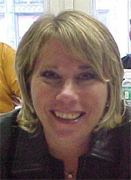Rocketry in
Motion
Project URL:
http://teachersnetwork.org/teachnet-lab/ps101/rocketry/contents.htm
How it works:
This unit is a series of lessons
centered around the invention of rocketry. Most students do not realize
that rockets are based on one of the simple laws of physics described by
Sir Isaac Newton: "For every action, there is an equal and opposite
reaction." From that simple law, students learn the dynamics of why a
balloon flies in one direction as the air escapes in the opposite
direction. Also from that simple concept, students understand the nature
of rockets, beginning with early fireworks, war rockets, and, finally,
space rockets. They learn the basics of rocket propulsion, how rockets
work in a vacuum, and the identity of some scientists associated with
defining the laws of rocket science, as well as those scientists
responsible for the creation of modern rockets. Students use the computer
as a tool for conducting research and creating a timeline of
rocket history, reports on rocketry, and a slide show. Students also have
the opportunity to do many hands-on experiments to see the principles of
rocketry in action.
Standards
addressed:
Students demonstrate understanding of
objects in motion and of big ideas and unifying concepts. They ask
questions about natural phenomena, events, and discoveries; identify
problems; propose and implement solutions; and evaluate the accuracy,
design, and outcome of investigations. They work individually and in teams
to collect and share information and ideas, and use technology and tools
to gather data and extend the senses. The students also use scientific
notation for writing of experiments.
Materials
used:
Required materials include computers with Internet access,
scanners, digital cameras, and imaging software such as KidPix,
SuperPrint, and HyperStudio.
The students:
Rocketry in Motion was conducted
with fifth grade students of average ability. They all had a working
knowledge of the computer, including Internet use and the various drawing
and word processing programs. Students should also have experience working
in cooperative learning groups as well as on their own.
Overall
value:
The best features of this unit, besides the study of
rocketry, is the use of the computer to enhance learning. It enables the
students to use their creative abilities to write and illustrate their
work. The creation of a timeline and slideshow is a great way to share
their accomplishments with fellow
students.
Tips:
Make sure students use pre-selected
sites. Divide the children into cooperative groups beforehand and be
certain they know their assigned roles. Go over the use of the
various computer programs that will be used. Train a few students in
the use of a digital camera.
|

About the teacher:
Bonnie Glasgold is a
science enrichment teacher at P.S. 101 in Brooklyn, New York. She believes
in a "hands-on" approach to teaching. She has been a member of TeachNet
for over four years and has regularly used technology to enhance her
science units.
E-mail:
bmglas@aol.com
Subject
Areas: Science
Mathematics
Technology
Grade Level:
5
|